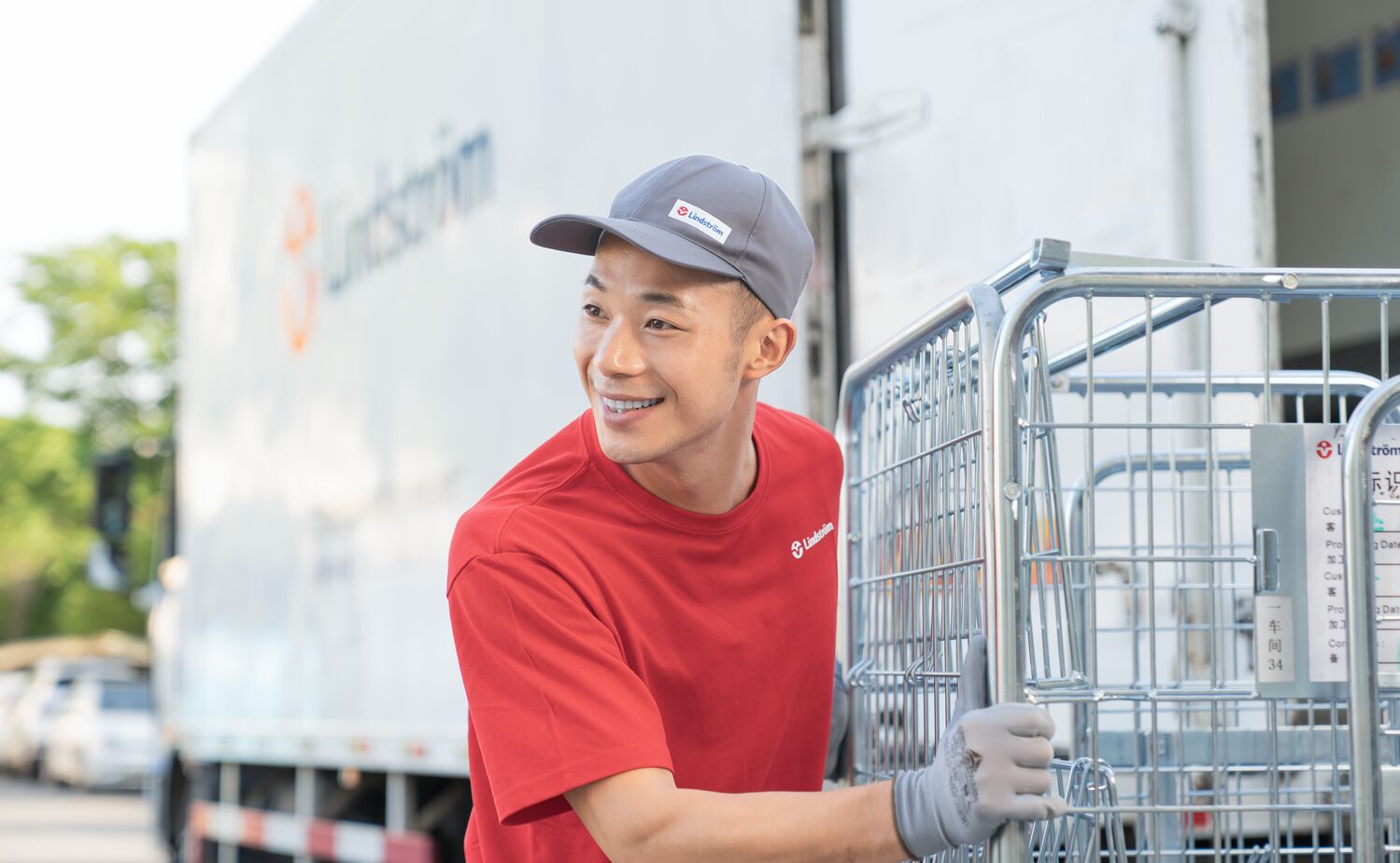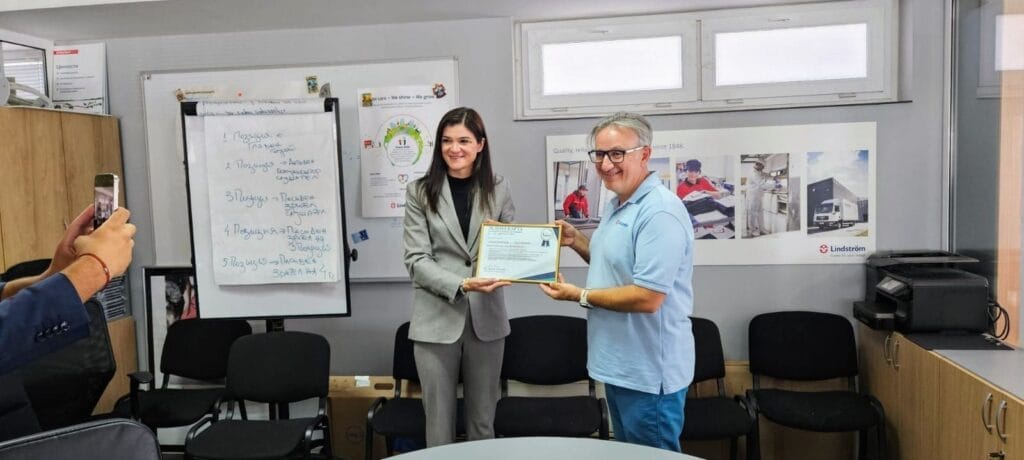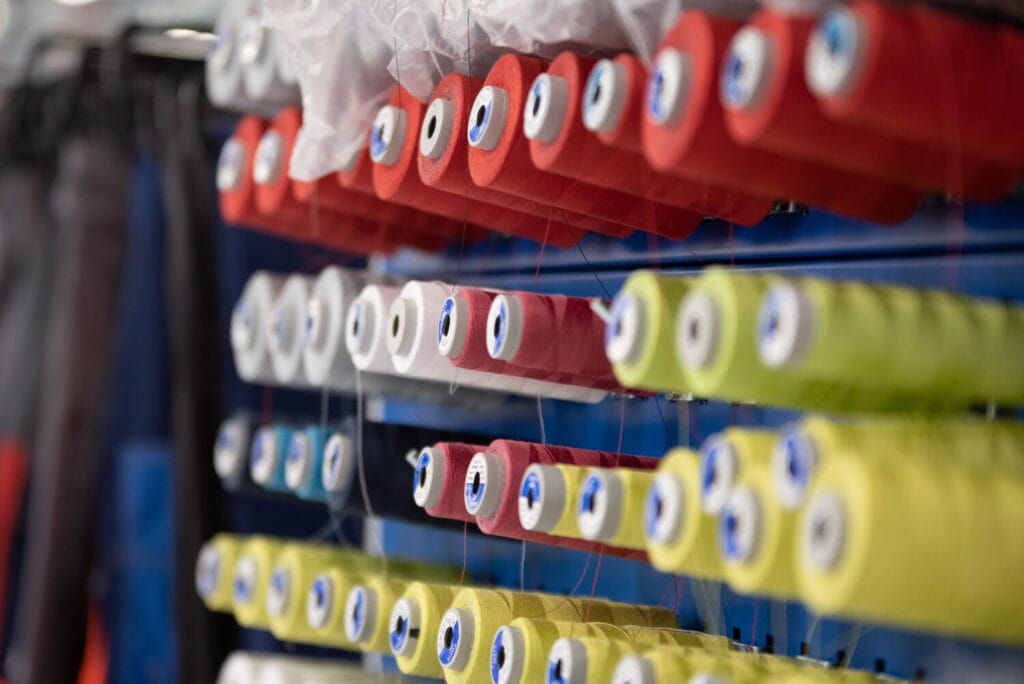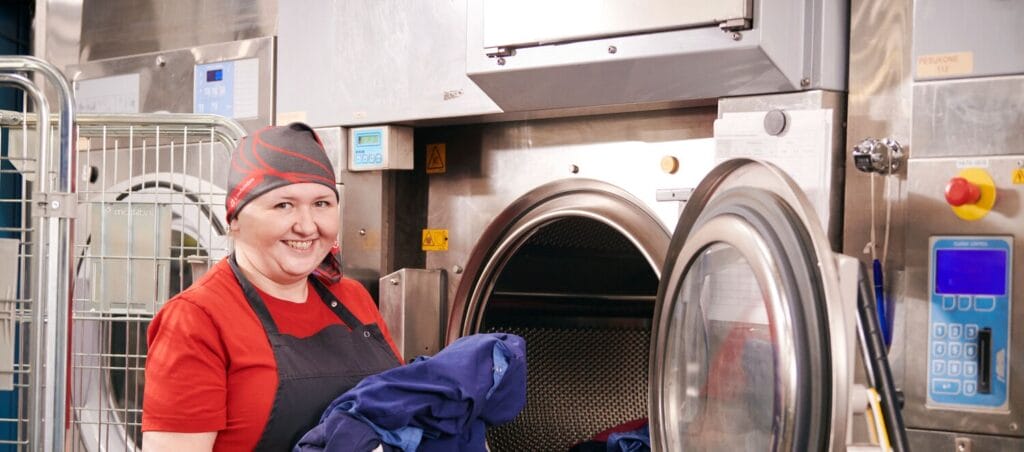
Driving sustainable change in customer deliveries
When Taneli Ranki, Head of Delivery started delving into the world of green transition in customer deliveries, he found himself at the forefront of a revolution in the transportation industry. His mission is to guide the Lindström countries toward the goal of reducing the Group’s greenhouse gas emissions from customer deliveries by 50% by the year 2030. Driven by a passion for sustainability, he embarked on a challenging journey marked by roadblocks but also promising avenues of progress.
Market immaturity is one of the key challenges
In the beginning of his journey, Ranki discovered a delightful fact: his calculations pointed to eVehicles being not only a sustainable option for customer deliveries but also the most cost-efficient one. However, the market was still in its infancy with only a limited number of viable options available. The payload capacity was often compromised due to the weight of the batteries.
“Our products are heavy. The chassis of delivery vehicles was originally designed for diesel cars,” Ranki explains. “The batteries of eVehicles weigh a lot, which reduces their payload capacity and affects our operations.”
He emphasises the need to take smaller steps when making the giant leap seemed out of reach: “Changing to alternative fuels like biogas and renewable biodiesel (HVO) may be the first step on our journey toward more sustainable transportation, especially in heavy vehicles, until other alternatives become available.”
However, a ray of hope emerged in the form of EU regulation: “The EU directive permitting the use of 4,250-ton e- and biogas vans with a standard driving licence may just be the boost we need in European countries. Hopefully it will act as a catalyst for strengthening the eVehicle market,” Ranki asserts confidently.
The Chinese market stands out with cost-efficient options
“China has emerged as a frontrunner in the eVehicle transformation race,” Ranki reveals with a spark in his eyes. “The Chinese market offers a wide range of cost-efficient eVehicles.”
In China, Dennis Chan, our Managing Director there, has been developing a roadmap for green transition. The first eVehicles are already in use in Wuhan, Suzhou, and Shanghai. However, the 250-kilometre range of the current eVehicles have brought a new dimension to route optimisation.
“We have long optimised the loads and routes of our customer deliveries. Now we must also consider how to make e-vehicle charging as convenient and efficient as possible. The range of the eVehicles is sufficient for shorter journeys, but on longer trips, the driver must recharge the vehicle en route,” Chan explains, continuing:
“Fortunately, charging stations are often located along the highway and the driver can take a well-deserved break while the vehicle is recharged. However, in a less ideal scenario, drivers may find themselves driving an extra 15-20 minutes to reach the charging station and spend another 45 minutes charging their vehicles. We actively work to minimise such situations with clever route planning.”
Nonetheless, Chan remains optimistic: “Our customers have been pleased with our new eVehicle-powered deliveries, and the costs of deliveries with eVehicles are also lower. This encourages us to push for change even harder. As technology continues to evolve, I’m confident that 100% of our customer deliveries will be made through greener alternatives by 2030.”
The change of mindset takes time
While Ranki is convinced of the benefits of eVehicles, he acknowledges that the change of mindset takes time: “For example, salespeople occasionally cling to familiar practices like promoting diesel vehicles despite car manufacturers focusing on green transformation. Our delivery partners are also cautious about change as there is a lot of uncertainty, for example, surrounding the resale value of eVehicles. It makes the change less appealing to them.”
However, Ranki is committed to leading the green transition forward. He is a testament to the fact that even in the face of market immaturity, product limitations, and resistance to change, progress can be achieved. It just takes time.





